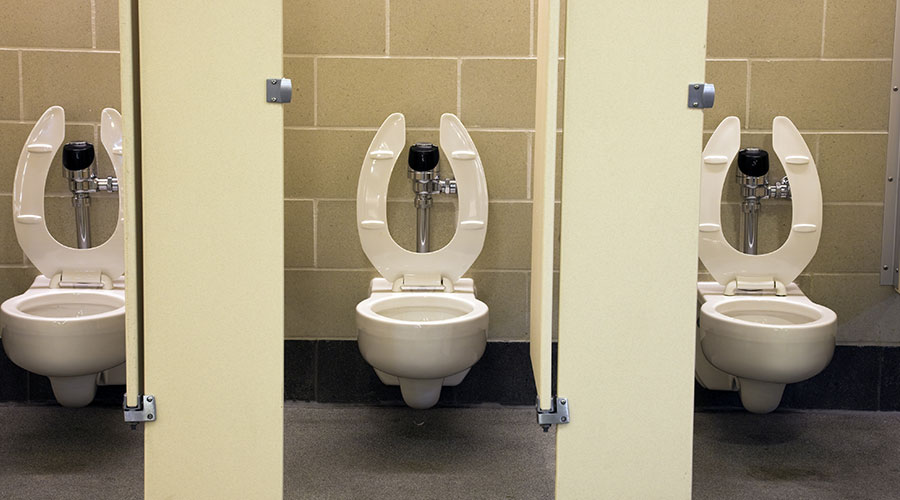Plume Problems: Toilets and Airborne Contaminants

Fecal bacteria and viruses ejected during flushing can contaminate restroom surfaces with microorganisms.
Our mothers warned us about germs on toilet seats in public restrooms, but they didn’t warn us about the toilet plume. In fact, flushing the toilet is more dangerous than most people understand. The toilet plume is very common in many restrooms and results from aerosols produced during flushing.
Fecal bacteria and viruses are ejected from the toilet during flushing. These materials can travel over eight feet from the toilet. The droplets settle in the washroom, contaminating the restroom with fecal microorganisms. Due to the amount of area that the plume covers, it impacts much of the restroom.
University of Colorado Boulder engineers studying the spread of fecal pathogens and health hazards associated with flushing pointed laser lights at a lid-less public restroom toilet — the same kind commonly seen in public restrooms — to illuminate rapid spreading tiny water droplets.
“We had expected these aerosol particles would just sort of float up, but they came out like a rocket,” says John Crimaldi, professor, lead author on the study and head of the university’s ecological fluid dynamics laboratory. “Once you see these videos, you’re never going to think about a toilet flush the same way again.”
Until now, no one understood what the airborne particles above flushed toilets looked like and how they land on surrounding surfaces. The research provided the first direct visualization of a plume rising out of a flushed toilet.
In another study, the Florida Atlantic University researchers performed tests on different types of toilets — namely, urinal and a public restroom toilet with its lid covering the top — to learn about the way aerosols were distributed in the air after flushing in normally ventilated public restrooms. The tests involved more than 100 flushes.
The results were troubling. Droplets rose as high as five feet into the air after flushing, and some lingered for 20 seconds or longer. Even closing the toilet lid only led to a small reduction in the number of droplets produced, indicating that they can escape through the gaps between the lid and the seat, as well as between the seat and the porcelain toilet rim.
Results of the study, published in the journal Physics of Fluids, demonstrate the way public restrooms could serve as hotbeds for airborne disease transmission, especially if they do not have adequate ventilation or if toilets do not have a lid or cover. Most public restrooms are not equipped with toilet seat lids, and urinals are not covered.
The droplets were detected at heights of up to five feet for 20 seconds or longer after flushing. Researchers detected a smaller number of droplets in the air when the toilet was flushed with a closed lid, suggesting aerosolized droplets escaped through small gaps between the cover and the seat.
J. Darrel Hicks, BA, MESRE, CHESP, Certificate of Mastery in Infection Prevention, is the past president of the Healthcare Surfaces Institute. Hicks is nationally recognized as a subject matter expert in infection prevention and control as it relates to cleaning. He is the owner and principal of Safe, Clean and Disinfected. His enterprise specializes in B2B consulting, webinar presentations, seminars and facility consulting services related to cleaning and disinfection. He can be reached at [email protected], or learn more at www.darrelhicks.com.?
The post "Plume Problems: Toilets and Airborne Contaminants" appeared first on Healthcare Facilities Today

